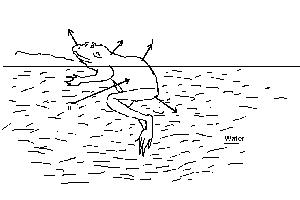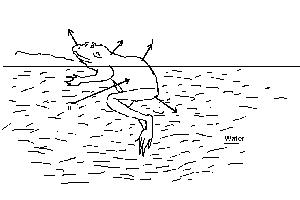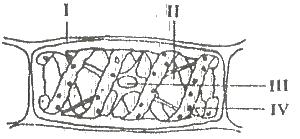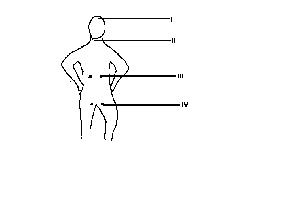
The process of water loss and intake indicated by the arrow labelled I and II are respectively
exhalation and osmosis
urination and diffusion
osmosis and diffusion
evaporation and osmosis
Correct answer is D
- Most frog species show little resistance to evaporative water loss (EWL) through their skin.
- The movement of water across membranes from areas of high concentration (lots of water) to areas of low concentration (less water) is called osmosis. The reason frogs do not have to actively drink water and instead can sit in a bowl of water and absorb water passively is due, in large part, to osmosis.
- That is, frogs do not drink like we do; they absorb water directly through their skin in an area known as the 'drinking patch' located on their belly and the underside of their thighs.

A noticeable adaptation of the animal to its aquatic habitat is the possession of
a wide mouth
large eyes
webbed digits
fore limbs
Correct answer is C
No explanation has been provided for this answer.

The structure that are common to both plant and animal cells are labelled
IV and I
II and IV
II and III
I and II
Correct answer is C
No explanation has been provided for this answer.

Food is stored in the structure labelled
III
I
IV
II
Correct answer is C
No explanation has been provided for this answer.

The gland usually found in the position labelled I is the
adrenal
thyriod
pancreatic
pituitary
Correct answer is D
No explanation has been provided for this answer.
JAMB Subjects
Aptitude Tests